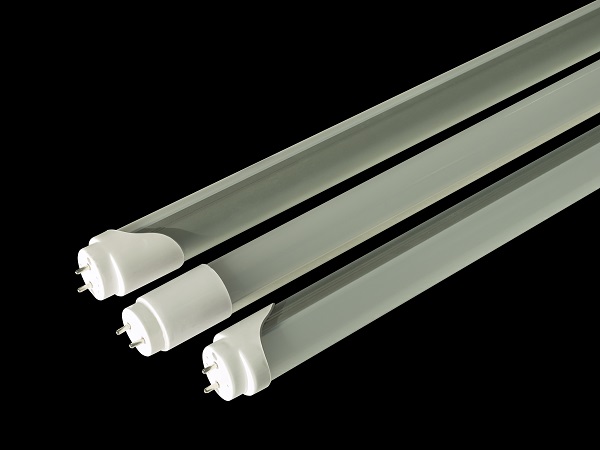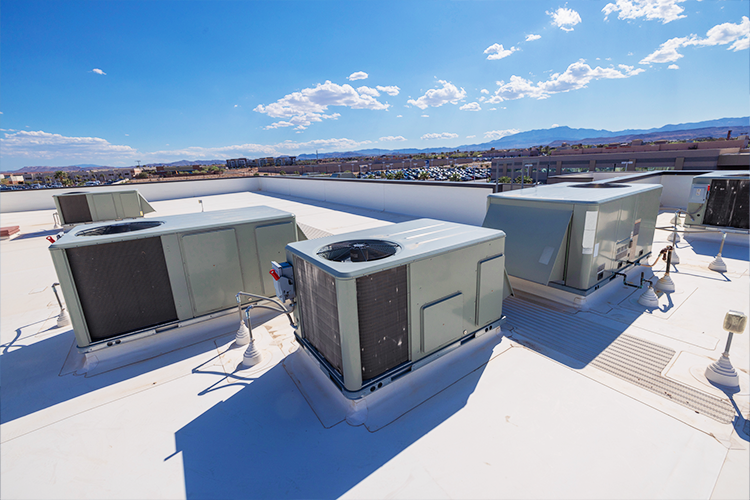T8 LED Tubes – What are my options?
June 2, 2014
In my mind there are three major categories of T8 LED Tube replacements: Direct Lamp Replacements, Ballast/Driver Swap and Ballast Bypass. They all have advantages and disadvantages, which I will discuss.
Direct Lamp Replacements
With this style of T8 LED, the change is quite simply a relamp. The new LED tubes use the existing fluorescent ballast as their power source and apply their own internal circuitry to convert that voltage/current to something that the LEDs can use.
Advantages
Relamping is an attractive option for two reasons:
- Install cost. This is the most obvious advantage, and frankly, one that might just outweigh all the negatives. Assuming that material cost is the same, being able to treat a T8 LED conversion as a relamp instead of worrying about rewiring a driver or the existing tombstones gives this style a huge total install cost advantage.
- “Future proof” design. Looking into the future, when either the lamp fails or other replacements gain enough efficacy to justify another conversion, you aren’t locked into any specific brand. Anyone’s direct lamp replacement will work just fine in this fixture.
Disadvantages
With these fantastic advantages come, unfortunately, four disadvantages worth noting:
- Lower efficacy. Something I’ve just noticed over time is that this style of T8 LED seems to be less efficient than the other two styles. Don’t get me wrong. Getting 110 lm/W out of 1” diameter tubes that run off of a variety of electronic ballasts is some pretty darn good engineering. But the efficacy of Direct Lamp Replacements generally seems to lag the other two styles.
- Rebate reluctance. Utility companies are hesitant to incent conversions that can be easily undone. Why would someone want to convert back to fluorescent after converting to LED? I don’t know. But the fact that it’s possible leaves some utility companies squeamish.
- Failing ballasts. Imagine the frustration of building owners when, just a month after spending the money to upgrade to T8 LED tubes, they get a call saying fixtures are out. Just because the LED tubes are going to last 10 years doesn’t mean the old ballasts will. Their maintenance calls might be reduced, but they aren’t going to go away. Will maintenance personnel know what to do? If they figure out that it was a ballast failure, what will they replace it with?
- Not knowing which ballasts work with T8 LEDs. Does it have to be Electronic? Program Start? Instant Start? Rapid Start? Dimming? Some claim (and I have no reason to doubt them) that their T8 LEDs work with all of these ballast types. Others say they only work with Rapid Start.
Ballast factor: Advantage or disadvantage?
Some products in this family regulate their wattage and lumen output based on the ballast factor, just like a fluorescent system would. The product might be nominally 2200lm and 22W, but those numbers could go as low as 1650lm/16.5W or as high as 2600lm/26W. On the plus side, one could argue that with this feature we are matching the directional lumens on the fluorescent system no matter the existing ballast.
The problem with this is two-fold. First, this presumes the original design and lumen output calculation was done by a lighting designer, or at least someone with lighting design capabilities. I hesitate to assume that most of the time. Second, it doesn’t consider that the layout changes and/or ballast replacements that take place over time could compromise the original design intent.
Ballast/Driver Swap
This style of retrofit is something that EMC and our installers are already very familiar with. It’s essentially a relamp/reballast. You replace the fluorescent T8s with the T8 LED lamps and replace the fluorescent ballast with a new LED driver.
Advantages
There are three major pluses associated with this style of system:
- Runs more efficiently. Typically, since the LEDs are optimized to the driver, the system runs at a lower wattage than the Direct Lamp Conversion. We might be at 20W (at 125-130lm/W) rather than 22W (at 110lm/W). This might not make a very big short-term impact, but over the long haul it can make a huge difference to your Total Cost of Ownership.
- Resets the clock. In the Direct Lamp Replacement scenario you leave behind a device that already has an age to it, the ballast. With this system you are removing that ballast and resetting the clock on your whole fixture. This will give you a high level of predictability for maintenance as well as a strong position when it comes to warranty claims.
- Rebate acceptance. Of the three options, I think utilities prefer this style of retrofit. It’s the most permanent and probably the most easily understood on the maintenance side of things.
Disadvantages
There are two big drawbacks to a ballast/driver swap retrofit:
- Cost. When comparing this to a Direct Lamp Replacement we are adding two major costs to a retrofit: The cost of the external driver and the labor to remove the ballast and install that new external driver. Typically these T8 LED retrofit projects are very payback conscious. Adding in these two costs ends up being a huge hurtle to overcome.
- You’re locked into one LED company for future upgrades. With a Ballast/Driver Swap, once you install a new driver from LED Company XYZ, you commit yourself to that company for future upgrades. Whether it’s in five years and you want to save more energy, or when the lamps start to degrade to the point of replacement, it would be preferable to be able to replace that lamp with anyone’s T8 LED. That will not be the case here. The beauty of the fluorescent T8 lamp is that just about anybody’s product will work with anybody’s ballast. Sometime in the future we may get there with T8 LED, but we aren’t anywhere close to that yet.
Ballast Bypass
I was down on this style for a while. It just seemed too “Frankenstein-y.” I wasn’t totally sold on the idea of 120/277V power being hooked up to the existing fluorescent tombstones.
Was it a shock hazard?
Could the tombstones take it?
What happens if I put a fluorescent lamp back in?
Then there were scare stories from manufacturers of competing products, of UL coming down on this type of T8 LED, by no longer giving them UL approval.
I’ve come around though. The good companies have solved the safety issue associated with Ballast Bypass, which I will discuss with the other negative in a bit. The tombstones are rated to take the 120/277 without issue (they are rated for 600V). I’ve been told the fluorescent lamp will fail, but NOT “non-passively.” (For those familiar with metal halide lamps read: it will not explode.) Finally, some of the companies that were ringing the UL warning bells have changed their tune and are now working on their own versions of 120/277 T8 LED.
Advantages
There are some real benefits to Ballast Bypass:
- Efficacy. I’m not sure why, but the efficacy of these lamps seem to rival the Ballast/Driver swap retrofit. Logically, it would stand to reason that the efficacies of these lamps would be in line with Direct Lamp Replacements, since they both are running off of “unnatural” power, but these lamps consistently outperform them. We are seeing them up in the 125-130lm/W range, with the “economy” versions still coming in around 110lm/W. This is right in line with the Ballast/Driver Swap.
- Future proof style. As with the direct lamp replacement style, this option is very future proof. In five years you would be able to replace this T8 LED with anyone’s ballast bypass version.
- Rebate acceptance. Unlike Direct Lamp Replacement, it is very tough to go back to fluorescent lamps, which gives the Ballast Bypass option very good rebate acceptance.
- One failure point. Finally, I think there is something to be said for removing a failure point. All the electronics are internal to the T8 LED. If there is a failure you can be sure it’s the lamp. This is a maintenance as well as warranty advantage.
Disadvantages
There are two main issues with the Ballast Bypass option:
- Safety. As I said above, if not properly designed, safety can be a concern. The issue here is not that there is 120/277V connected to the tombstone. Like I said, those tombstones are rated for 600V, which means that’s it’s gone through the UL jointed finger test. The problem can arise when one end of the T8 LED tube is inserted in the hot tombstone, which could energize the opposite lamp socket.
The solution: Make one of the sockets a dummy, or non-energized socket. This seems logical, of course, but some early versions (and still probably some very cheap versions) didn’t take that into consideration. Just make sure you are using T8 LED lamps that have only one side that accepts power.
- Cost. Compared to the Ballast/Driver Swap, Ballast Bypass is less expensive because there isn’t the additional material cost of the driver. However, when compared to the Direct Lamp Replacement it is more expensive because of the additional electrical work required to energize the sockets with 120/277.
Summing it Up: Just Looking at System Cost
For a second let’s ignore most of the advantages and disadvantages of these three T8 LED replacement options and just look at system cost.
Generally speaking, your quickest payback option is going to be the Direct Lamp Replacement option. Coming in second—and a close second depending on your energy rates—would be the Ballast Bypass option. Typically, if you look at a total cost of ownership over anything more than four years, the ballast bypass option would be your lowest total cost option.
Tony Johnson is Energy Management Collaborative's Technology Manager. In this role he combines his background in lighting & controls design and solid state light fixture design with his expertise in energy savings to evaluate emerging technologies for EMC customers.


